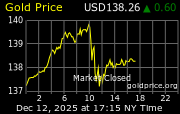Ten-year anniversary of the launch of euro coins and notes
 While Saturday marks the ten-year anniversary of the launch of euro coins and notes, the ongoing sovereign debt crisis promises to be one of the most important storylines for the global economy as 2012 begins.
While Saturday marks the ten-year anniversary of the launch of euro coins and notes, the ongoing sovereign debt crisis promises to be one of the most important storylines for the global economy as 2012 begins. The crisis has led to a situation now where “the euro is at risk of unraveling,” according to a report by Reuters that examined the history and shortcomings of the currency. ”How could it all have gone so wrong?” the article asks.
In the report, Reuters included extensive commentary from many former European officials who contributed to the euro’s development in order to help answer its question.
“The single currency would not have sparked the euro zone debt crisis, they argued, if the pro-European dynamic that led to its creation had continued into its first decade,” the report noted. “But instead of launching an economic and political integration of Europe, the low interest rates and easy money that arrived with the euro led peripheral states on a path of profligacy, widening the gap with frugal, export-oriented economies of the north.”
“Most of all,” Reuters added, “some of the architects now admit that after the first few euphoric years, it became clear the euro itself was a flawed concept, laying a single currency over a group of countries that stuck to national sovereignty over their economies.”





























































